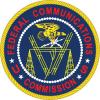Electromagnetic frequencies used for wireless communications
Spectrum
FCC Must Act Quickly As COVID-19 Threatens Healthcare, Education
The Schools, Health & Libraries Broadband (SHLB) Coalition asked the Federal Communications Commission to expedite affordable broadband solutions for unconnected Americans. The novel coronavirus is driving schools to online learning and increasing healthcare providers’ reliance on telehealth solutions.
T-Mobile herds 600 MHz spectrum from other providers for COVID-19 response
T-Mobile worked with a variety of other providers to rustle up additional 600 MHz spectrum to help it meet increased customer demand for wireless broadband, as people are forced to work and learn from home. The companies that have agreed to contribute spectrum are Dish, Comcast, NewLevel, LB License Co, Channel 51, Omega, Bluewater and TStar License Holdings.
Science and Tech Spotlight: 5G Wireless
Although 5G is mainly being deployed by industry, governments and other organizations will decide how to use public resources, such as spectrum, and what obligations network operators will have to their users. Among the questions they will face are the following:

Chairman Pai's Response to Senators Thune, Fischer, and Moran on 6 GHz
On Dec 20, 2019, Sens John Thune (R-SD), Deb Fischer (R-NE), and Jerry Moran (R-KS) sent a letter to Federal Communications Commission Chairman Ajit Pai urging the FCC to take action regarding unlicensed use of the 6 GHz band while protecting existing users of the band.

FCC Grants T-Mobile Temporary Spectrum Access During Coronavirus
The Federal Communications Commission granted Special Temporary Authority to T-Mobile U.S.A. to use additional spectrum in the 600 MHz Band to help it meet increased customer demand for broadband during the coronavirus pandemic.
5G Millimeter Wave $7.5 Billion Auction 103 Winners Announced
The Federal Communications Commission released the winners in Auction 103 of 5G millimeter wave spectrum in the 37 GHz, 39 GHz and 47 GHz bands, and it looks like the nation’s largest mobile carriers won the vast majority of the spectrum. The auction raised a total of more than $7.5 billion. The largest winner was Straight Path Spectrum LLC, which won 4,940 out of 14,142 licenses won and which appears to be a bidding name for Verizon. The second largest winner was Fiber Tower Spectrum Holdings, LLC, which won 3,267 licenses and which appears to be a bidding name for AT&T.

FCC Concludes Largest Ever Spectrum Auction
The Federal Communications Commission announced the conclusion of bidding in Auction 103, which made 3,400 megahertz of millimeter-wave spectrum available in the Upper 37 GHz, 39 GHz, and 47 GHz bands. The auction had a total of $7,558,703,201 in net bids, with 28 bidders winning a total of 14,142 of 14,144, or more than 99.9%, of available licenses. “The successful conclusion of Auction 103—the largest amount of spectrum offered in an auction in US history—is one more significant step the FCC has taken toward maintaining American leadership in 5G,” said FCC Chairman Ajit Pai.
State And Local Coalition Calls For Federal Broadband Investment
A coalition of organizations representing state and local governments released the following statement in response to hearings on the FY 2021 Budget Request for Federal Communication Commission before the Senate Appropriations Subcommittee on March 10 and before the House Appropriations Subcommittee on Financial Services and General Government on March 11:
Telecom Fights Tech Over FCC Plan to Open Airwaves to Wi-Fi
Big Tech and Big Telecom are wrangling over a Federal Communications Commission plan that would open up an unprecedented amount of airwaves to meet the nation’s Wi-Fi demand. The FCC is expected to vote before the end of April on a plan that may quintuple the amount of spectrum available to handle data from millions of Wi-Fi-connected smartphones, laptops, and other devices.

Chairman Pai Remarks to the International Association of Firefighters
This past Nov, a bipartisan majority at the Federal Communications Commission adopted a vertical, or “z-axis,” location accuracy metric of plus or minus 3 meters for wireless 911 calls. That means that in the coming years you will be able to more accurately identify the floor-level for most 911 calls and reduce emergency response time.

